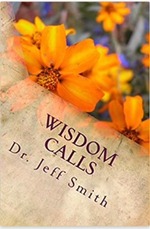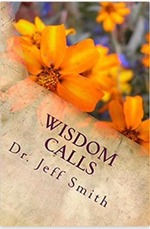The Song of Songs, Which is Solomon’s
 Thursday, February 16, 2012 at 10:20AM
Thursday, February 16, 2012 at 10:20AM “The whole world is not worth the day on which the Song of Songs was given to Israel; all the Writings are holy, but the Song of Songs is the holy of holies.”
That sentiment, so eloquently voiced by Rabbi Akiva (ca. A.D. 50–ca.135), is hardly shared by many Bible readers today. While most seem to accept the canonicity of the Song of Solomon, few find its inscrutability endearing and the book’s overt eroticism has reduced it to a homiletic footnote in many pulpits.
Along with the book of Esther, which is seldom held to the same level of suspicion, the Song of Solomon is noteworthy for its sparse reference to God (8:6). Its blatant sexuality, in fact, makes its very inspiration questionable to readers who compare it to the much more conservative tones of the New Testament.
Discomfort with its apparent theme has led generations of commentators to seek a subtler explanation of the text, usually one that ascribes the tenderness of the book to an allegorical prediction of Christ’s love for the church or the human soul. More recently, scholarship has turned away from such flights of fancy, opting for a more literal interpretation that accepts its sexuality as realistic, if not always sufficiently restrained.
The Text
Although titled “The Song of Solomon,” the text is grammatically unclear if this indicates Solomonic authorship, audience, or homage. Any certainty whether Solomon is the book’s antagonist, as is sometimes suggested, has been lost, if it was ever known. Linguistic clues in the Hebrew text point minimally to later editing of the book, if not authorship, and internal contextual clues would allow Solomon to be simply an observer, rather than a rival to the shepherd who seeks the Shulamite maid’s attention.
Even more than the book of Job, reading the Song of Solomon is made difficult by the constant shifting of speakers. Hebrew pronouns help to clarify who is speaking, but without interpolative prompts, the English reader can quickly become confused as to which character has stepped to center stage. Gender and number, therefore, are key to discerning the speaker in each setting.
The main characters are the Shulamite maid, a young, dark, and lovely Hebrew virgin; and her beloved shepherd boy. That could make her a native of the village of Shunem in the territory of Issachar, which would eventually be part of the northern kingdom of Israel (Joshua 19:18, Second Kings 4:8). They are lovesick (2:5) and subject to intense longing for each other, a desire to enjoy the thrills of the marriage bed which must wait until their engagement is succeeded by marriage (2:7).
The book reads almost like a play, complete with a chorus that comments upon the speeches and soliloquies of the protagonists. King Solomon, despite his top billing, seems to be little more than an idealized icon, rather than a direct participant in the action (1:5; 3:7, 9, 11; 8:11–12).
Interpretation
Due to its overt sexuality, traditional interpretation has spiritualized the erotic language in the Song of Solomon, treating it as a prediction of Christ’s love for mankind, or for the church. While those themes are present in the New Testament, the intensity of the language in the Song of Solomon and the lack of any hint toward symbolism make that interpretation seem desperate, even obscene. While Christ’s love for the church is compared to that of a husband for his wife in the Pauline epistles, the physical attraction and sexual longing of the Song of Solomon is most incompatible with such a spiritual and brotherly relationship (see Ephesians 5:22-33).
The Song of Solomon describes in explicit terms the infatuation, courtship, union, and consummation of two betrothed Israelites, the Shulamite maid and her beloved shepherd. Whether understood to be private love poetry or lyrical performances, their words form songs of attraction and physical appreciation for the other. Where Shakespeare compared his sweetheart favorably to a summer’s day, the Shulamite and the shepherd choose similes that sound very strange and even insulting in modern ears. Calling her a lily among the brambles is one thing, but comparing her hair to a flock of goats and her teeth to shorn ewes is a bit perplexing at first.
The plot follows the latter stages of their courtship as they yearn for one another (1:2-2:17, 6:4-8:4), dream of their union (3:1-6:3), and finally join in marriage (8:5-14). While physical attraction is a persistent, sometimes comical and even uncomfortable theme in the book, a dedication to virginity and moral purity is also present. The difficulty with which sexual purity is protected against lust and an apparently inevitable wedding is presented honestly, rather than idealistically. Instead of quashing thoughts of physical attraction and fantasy, the young lovers revel in anticipation, especially in the interstitial dream sequence: “Let my beloved come to his garden, and eat its choicest fruits,” the Shulamite offers in a bit of double entendre (4:16).
New Testament disciples, more familiar with counsel to flee youthful passions and sexual immorality, reflexively find their speech and fantasy to be scandalously unwise (Second Timothy 2:22, First Corinthians 6:18). The apparent moral contradiction and lack of contextual condemnation only exacerbates doubts about the book’s canonicity. In reality, however, many Old Testament stories contain elements of immorality which remain unpunished in the immediate context – from the deceptions of Rahab to the more relevant concubinage and polygamy of King David, it is not necessary to Christian morality that the Old Testament condemn every act of immorality.
True Love Waits
Perhaps the book’s canonicity is redeemed most, however, if it is understood to demonstrate a realistic account of one couple’s struggle to make it to the wedding day with their purity intact. Understanding the middle chapters to form only a dream – “I slept, but my heart was awake,” she says (5:2) – actual consummation in the marriage bed waits until the final act. A potentially suppressive theme arises in the book – “I adjure … that you not stir up or awaken love until it pleases” (2:7, 3:5). When repeated in the book’s climactic scene, it reads like a claim of moral victory, especially as the Shulamite and her shepherd are finally united as husband and wife: “Set me as a seal upon your heart, as a seal upon your arm” (8:6). She is declared to have been a wall of resistance to fornication, rather than an open door to promiscuity (8:8-10), and “under the apple tree,” intimacy between the lovers is morally and reproductively established (8:5).
While the Song of Solomon is most noteworthy for its description of marital sensuality, other Old Testament books and Wisdom Literature are consistent with such themes. The fifth chapter of the Proverbs, although shrouded somewhat in idiom and euphemism, is likewise quite explicit:
Drink water from your own cistern,
flowing water from your own well.
Should your springs be scattered abroad,
streams of water in the streets?
Let them be for yourself alone,
and not for strangers with you.
Let your fountain be blessed,
and rejoice in the wife of your youth,
a lovely deer, a graceful doe.
Let her breasts fill you at all times with delight;
be intoxicated always in her love. (Proverbs 5:15-19 ESV)
Where the Wisdom Literature is poetic and appreciative of the human form, some of the prophets use language that is disturbingly raw. Ezekiel compared Jerusalem to a pubescent maid (16:7-8) and a promiscuous ingenue (16:25, 23:3, 21). (See also Hosea 2:2.)
Canonicity and Worth
The value, if not the canonicity, of the Song of Solomon is frequently decided then by the morality of its theme, the chronology of its plot, the choice of interpretation, the awkwardness of its language, and the compatibility of the message with the New Testament.
If the allegorical interpretation is rejected in favor of a literal understanding that the book is a simple love story, the morality of the play must be questioned. If, however, sexual consummation itself is left until the wedding night in chapter eight, fornication is avoided and the marriage bed is undefiled (First Thessalonians 4:1-8, Hebrews 13:4).
The moral quandary of sexual yearning and fantasy, however, arises as a result. Although far from idealistic, the book’s language is honest and virginity is protected and celebrated against just as much internal and external pressure as exists today (First Peter 4:1-5). It is up to the New Testament of Christ to issue the cautions against unbridled lust and yearning, as it should be (Matthew 5:28, First Corinthians 7:1-5, James 1:12-15).
Even if the canonicity of the Song of Solomon is conceded, for many the awkwardness of the language remains an obstacle to its utility in teaching and application today. The seeming absurdity of the Hebrew idiom is greeted with alternating confusion and condescension, while the book’s overt sexuality can produce both embarrassment and snickering. While those impediments are valid, in mature settings, they should not prevent a serious consideration of the themes of a book that God saw fit to permit to enter and remain in the biblical canon over the last three millennia.


